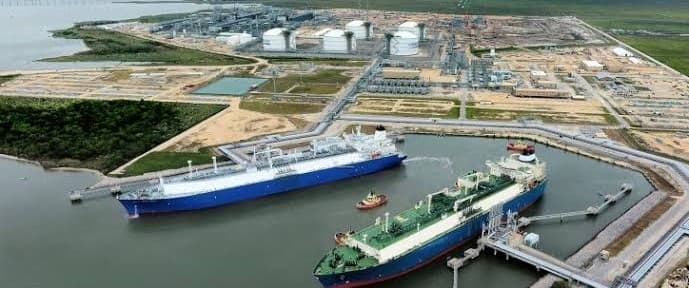The U.S. is already on its way to becoming the biggest LNG exporter in the world in terms of capacity. This trend is only going to accelerate in the next four years as the country leads new capacity additions for the superchilled, low-emissions fuel.
Demand for LNG, meanwhile, will motivate a doubling in global capacity in the years until 2027. That might raise some questions about the success of some Western governments that are determined to reduce reliance on natural gas, including the Biden administration.
On the other hand, it highlights the importance of reliable, dispatchable energy even as wind and solar capacity also grow.
The United States will remain the dominant player in the global LNG market in terms of capacity additions over the next four years, accounting for the bulk of 60% of new capacity additions for North America as a whole.
This is according to GlobalData, which forecast recently that North America will in 2027 have some 284.1 million tons of annual LNG liquefaction capacity. The United States will account for close to 76% of that total.
Global liquefaction capacity, meanwhile, is seen swelling from 487.3 million tons annually now to 958 million tons annually, GlobalData also said this month, modifying the future capacity as “potential”, however.
The reason it is only potential is likely the effort to make natural gas less popular in some significant consumers such as Germany. Continued strong demand, however, suggests that effort is all but doomed to fail: German utilities recently closed two -term deals for LNG imports.
The substantial growth in LNG capacity would also be really good news for poor Asian nations, which Europe has priced out of the LNG market, forcing them to make a step back to coal for their electricity generation. Related: Latest U.S. Upstream Merger To Create $14-Billion Permian Producer
Since there appears to be a broad agreement that natural gas is the lesser of two environmental evils when compared to coal, a push to switch from coal to gas will likely continue on the part of lending organizations funding these Asian nations. And for that, the world would need more capacity given the unexpected newcomer on the LNG market that Europe became last year.
Europe remains one of the big drivers for new U.S. capacity additions in the LNG area. The continent has become perhaps the biggest client of U.S. LNG traders over the past 18 months and is virtually certain to remain in this position because Russian pipeline gas supply is quite unlikely to return anytime soon if at all.
Despite sanctions, Russia will be the country to record the second-largest increase in LNG capacity over the next four years after the United States, boosting its total by 67.5 million tons annually, ahead of Qatar’s 48 million tons annually. Both figures, however, are modest in comparison with what GlobalData expects from the U.S.
There is a risk in that fast capacity growth, however.
Several years ago, LNG prices globally fell and stayed depressed because of a surge in new production capacity coming from Australia, where several massive offshore projects had just been completed.
The price slump discouraged many capacity additions and delayed others. These only regained their commercial viability when began rising two years ago. Of course, this viability got a massive boost last year. The problem is that it may not last forever even if Europe remains a big buyer of LNG, which it likely will.
The surge in LNG capacity, which has been predicted before as well, by more than one forecaster, depends on strong demand. Until recently, this demand could be taken as something certain because of the push to go from coal to gas, including LNG, because of the lower emission footprint of gas.
Now, however, various entities, from governments to the International Energy Agency to the UN are signaling that no hydrocarbon is acceptable in the transition, regardless of differences in emission footprints. Gas, from a bridge fuel to the net-zero world, has become just another fossil fuel that needs to be kept in the ground.
As pointed out, reality is different from net-zero plans, so gas demand is quite sure to remain strong in the coming years on a global scale. Yet if the push to decarbonize everything whatever the cost continues, LNG investors might sour on the cleanest of the hydrocarbon fuels. And this means a lot of that forecast LNG capacity additions might not see the light of day.
The other reason not all of this capacity might actually materialize is diversification efforts among large importers such as China and, recently, India. China and India have proved more than once they are willing and indeed prefer to do business with everyone rather than focus on one supplier like Europe did. This is what will drive the potential doubling of global LNG capacity.
By Irina Slav for Oilprice.com
More Top Reads From Oilprice.com:
- China’s Oil Imports From Iran Set To Hit Decade-High In August
- Bitcoin Crashes Amid A Wave Of Bearish News
- Rig Count Decline Accelerates Amid Rising U.S. Crude Oil Production


















